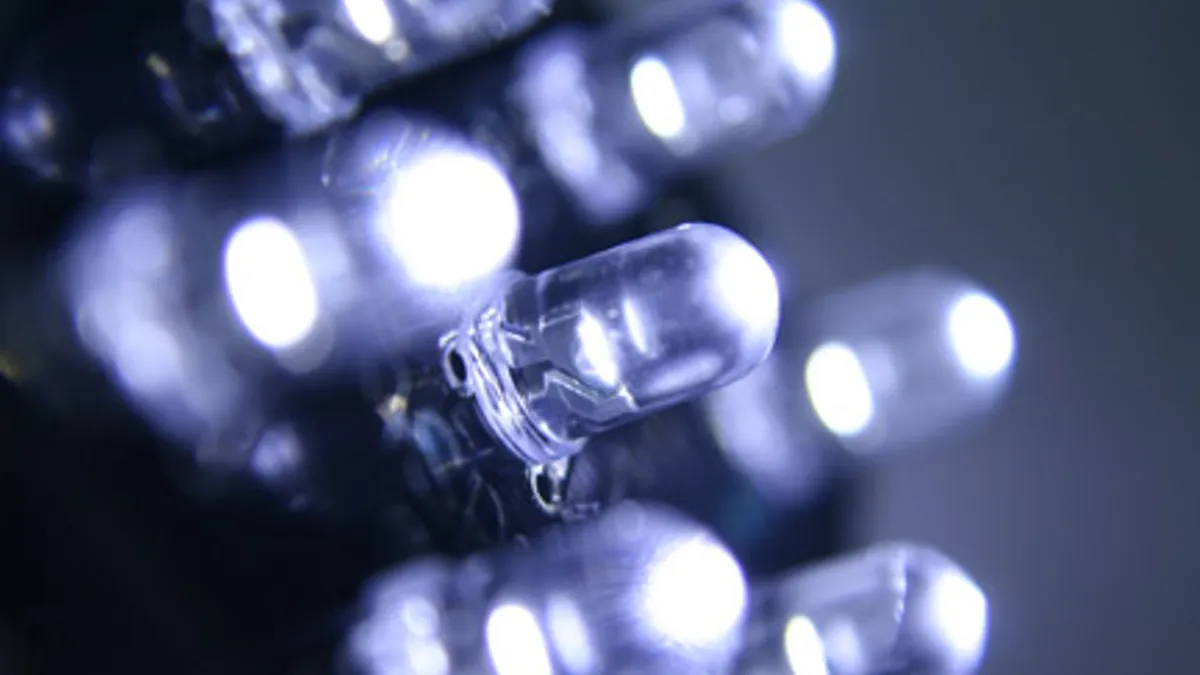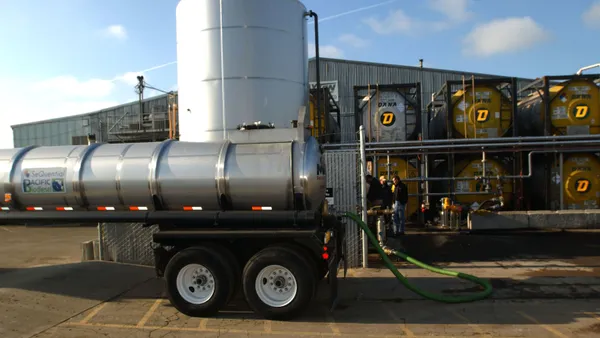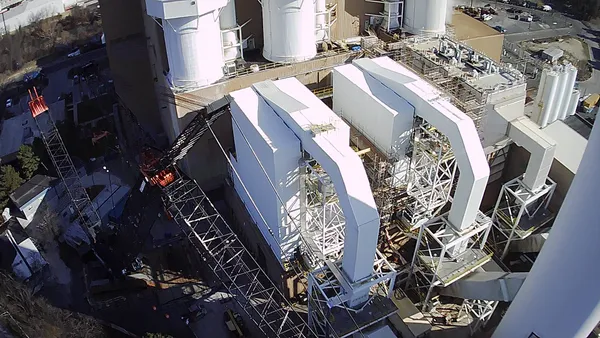Dive Brief:
- University of Utah Metallurgical Engineering Research Assistant Professor Prashant Sarswat and Professor Michael Free have successfully turned food and beverage waste into light-emitting diodes (LEDs), commonly used in Christmas lights, DVD players, televisions and flashlights.
- Some research has focused on using carbon dots (CDs), or quantum dots (QDs) made of carbon, to create LEDs, which will then have lower toxicity and can be used in a broader variety of applications. The researchers used soft drinks and pieces of bread and tortilla, and placed them in a solvent under pressure and high temperature until CDs were formed. The CDs were suspended in epoxy resins, heated and hardened for practical use in LEDs.
- A common source of QDs currently is cadmium selenide, which is comprised of two toxic elements. But there is no toxicity concern over creating QDs in the form of CDs from food and beverage waste. "QDs derived from food and beverage waste are not based on common toxic elements such as cadmium and selenium, which makes their processing and disposal more environmentally friendly than it is for most other QDs," said Free.
Dive Insight:
Aside from being less toxic, producing LEDs from food and beverage waste is considerably less expensive than creating them from cadmium selenide, which can cost $529 for 25 milliliters of the compound. "With food and beverage waste that are already there, our starting material is much less expensive. In fact, it's essentially free," said Sarswat.
Food waste has been a growing issue in the United States, as approximately 31% — or 133 billion pounds — of overall food supply is wasted. The waste is also affecting the environment, as it is the third largest contributor of methane emissions in the United States. Researchers at the Laboratory of Biological Modeling, a branch of the National Institutes of Health, have even found that food waste accounts for more than 25% of total freshwater consumption.
Sarswat and Free want to continue studying the LEDs for stability and long-term performance, R&D reported. "The ultimate goal is to do this on a mass scale and to use these LEDs in everyday devices. To successfully make use of waste that already exists, that's the end goal," said Sarswat.
Food waste is already used to create energy at some plants. Using food waste to make LEDs, which are already more energy-saving than fluorescent and incandescent bulbs, expands the possibilities for zero waste, low environmental impact, and money and energy savings.














